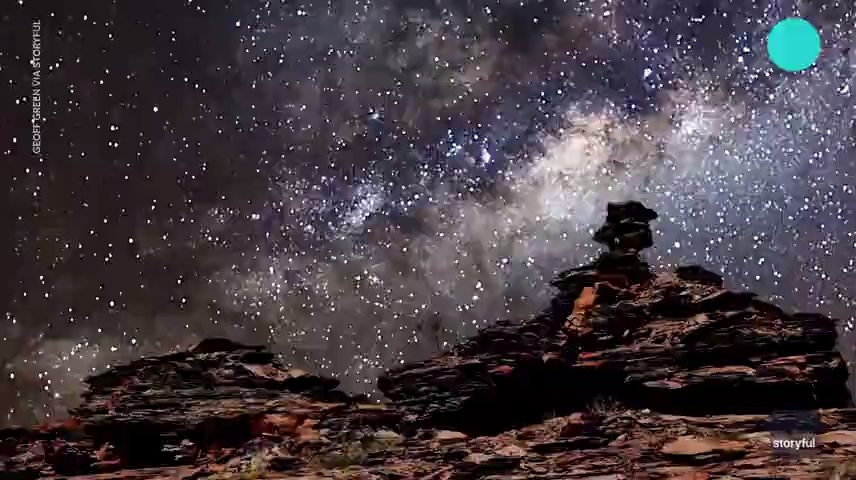Fact check: False claim 'Star of Bethlehem' will shine for first time since 1226 on Dec. 21
The claim: The 'Star of Bethlehem' will shine for the first time since 1226 on Dec. 21
In Christian tradition, the "Star of Bethlehem" guided wise men to the site of Jesus' birth in Bethlehem more than two millennia ago. Now, viral social media posts are claiming stargazers can see the same formation in 2022 for the first time in nearly 800 years.
“Mark your calendar for December 21st for 45 minutes after sunset," reads the Dec. 11 Facebook post (direct link, archived link) that was shared more than 6,000 times in less than one week. "The Star of Bethlehem will shine for the first time since 1226.”
Other versions of the claim garnered thousands of additional shares on the social media platform.
Follow us on Facebook! Like our page to get updates throughout the day on our latest debunks
But the post is off by two years. It was 2020 when Jupiter and Saturn aligned to form what some referred to as the "Star of Bethlehem," and it won't happen again until 2040. Experts told USA TODAY Mars, Jupiter and Venus – another lineup that's been suggested as the "Star of Bethlehem" – will not be in conjunction on Dec. 21.
USA TODAY reached out to users who shared the claim for comment.
'Nothing out of the ordinary' expected in sky on Dec. 21
There isn't a scientific consensus on what the "Star of Bethlehem" was, but experts told USA TODAY under no definition would it be making an appearance in 2022.
Thomas Fleming, an astronomy professor at the University of Arizona, said some astronomers believe the "Star of Bethlehem" was a conjunction of Mars, Jupiter and Venus. Conjunctions describe two or more astronomical objects that appear to be close to each other in the sky.
The planets will be visible on Dec. 21, but Fleming said they’ll be “nowhere near” each other so as to create a festive formation. He said the bright light some stargazers may see is Venus, which recently re-emerged in the evening sky.
It will make for a scenic view, but not a rare one.

“What you will see Wednesday night after sunset is the same thing you’ll see Tuesday night after sunset, it’s the same thing you’ll see tonight,” Fleming said. “There’s nothing out of the ordinary about this.”
The conjunction of Jupiter and Saturn has also been suggested as a possible explanation for the "Star of Bethlehem", according to Johns Hopkins University professor Kevin Lewis.
More: Closest known black hole to Earth, sitting 1,600 light-years away, found by astronomers
Such an event happens roughly every 20 years and last occurred with an "unusually close alignment" in 2020, he said. At the time, Astronomy Magazine reported it was the closest observable conjunction of the planets since 1226.
Lewis said the next conjunction of the planets won't be until 2040, and Forbes reported Jupiter and Saturn won't get as close as they were in 2020 until 2080.
Our rating: False
Based on our research, we rate FALSE the claim that the “Star of Bethlehem” will shine for the first time since 1226 on Dec. 21. The conjunction of Jupiter and Saturn in 2020 marked the closest observable alignment of the planets since 1226, but the formation won't happen again until 2040. Mars, Jupiter and Venus, another suggested theory for the "Star of Bethlehem," will not be in conjunction on Dec. 21, according to experts.
Our fact-check sources:
Kevin Lewis, Dec. 16, Email to USA TODAY
Thomas Fleming, Dec. 12, Phone call with USA TODAY
Astronomy, Dec. 18, 2020, The Star of Bethlehem: Can science explain what it really was?
Astronomy, Dec. 7, 2020, Jupiter and Saturn will form rare "Christmas Star" on winter solstice
Forbes, Nov. 20, 2020, A Spectacularly Rare ‘Christmas Star’ Is Coming In December As Two Worlds Align After Sunset
Thank you for supporting our journalism. You can subscribe to our print edition, ad-free app or electronic newspaper replica here.
Our fact-check work is supported in part by a grant from Facebook.
This article originally appeared on USA TODAY: Fact check: Jupiter, Saturn formed 'Star of Bethlehem' in 2020

